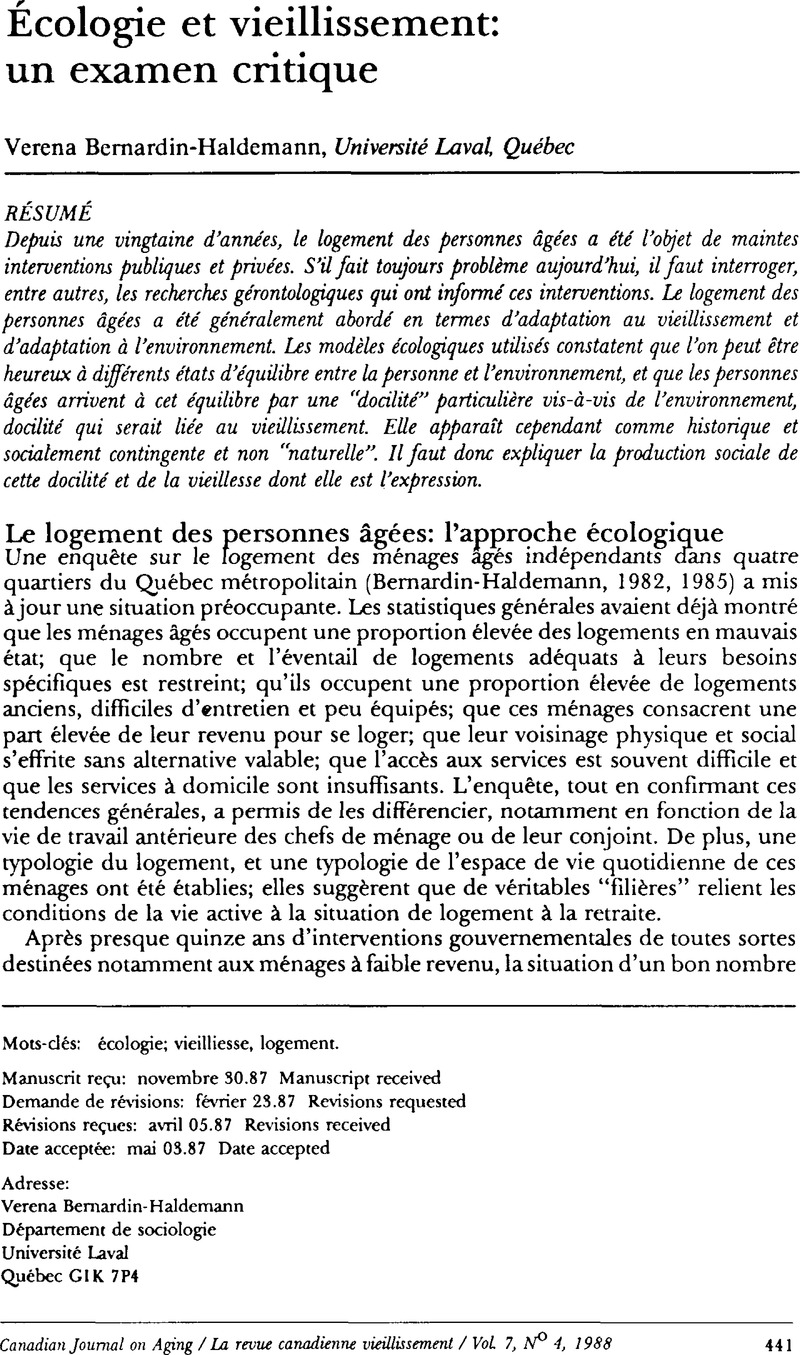Cowgill, D.O. (
1974), “The Aging of Populations and Society”, dans Jill S. Quadagno,
Aging: the individual and society,
New-York,
St-Martin's Press, 1980. (texte publié à l'origine dans
The Annuals of the American Academy of Political and Social Science, 1974).
Google Scholar 